This soft and fluffy sourdough milk bread reminds me of the sandwich bread we'd get from bakeries all over the Philippines. Think a really soft white bread with a shred-able crumb that pulls apart almost like cotton candy.
In this post, I’ll show you how to achieve that kind of softness with just your sourdough starter and no commercial yeast! If you're looking for a loaf that works with tall turkey sandwiches or toasted with butter and a sprinkle of sugar (a childhood favorite), this bread belongs in your regular baking rotation.
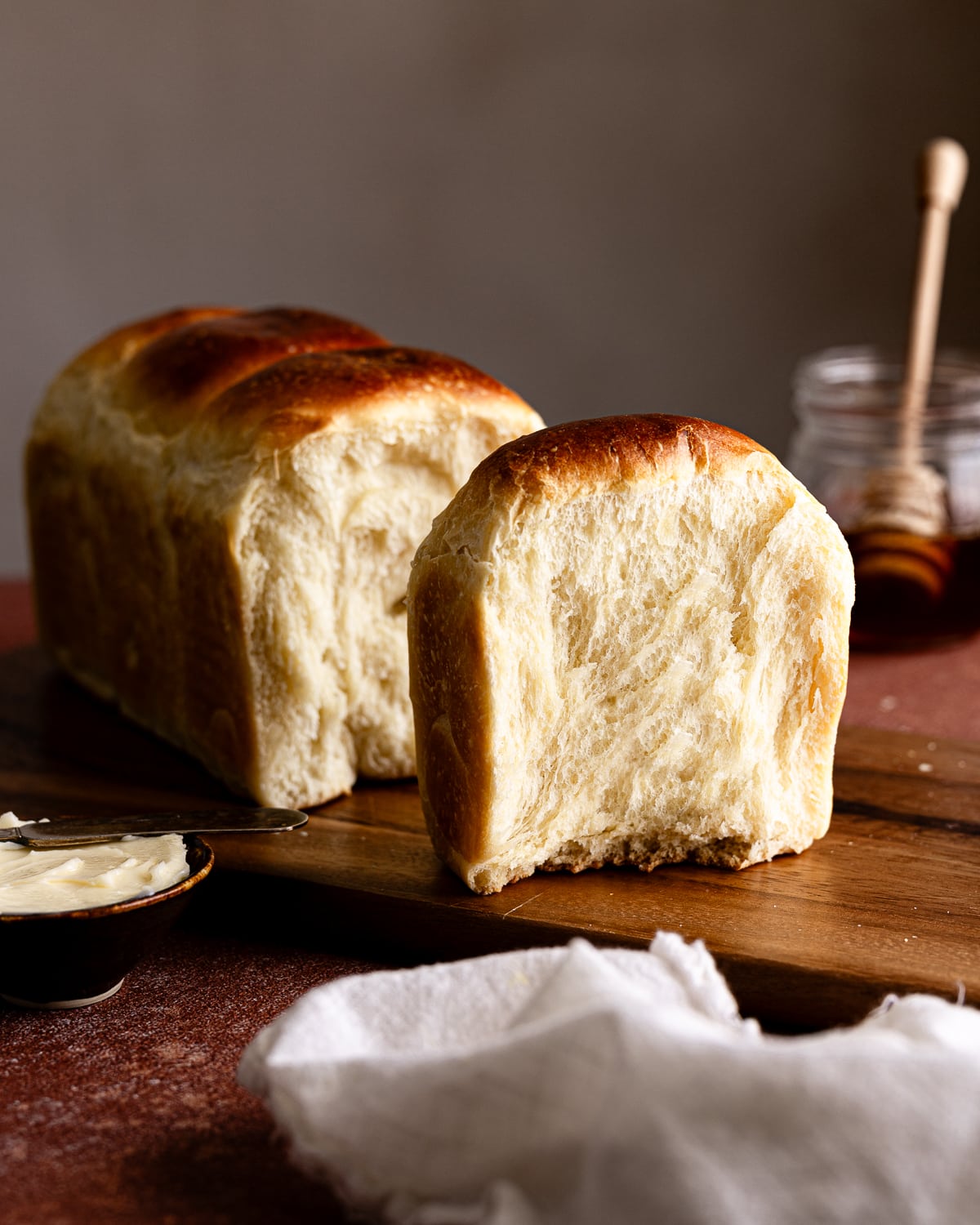
This recipe was originally published in Aug. 2022. I have since updated it with new photos, streamlined instructions and additional tips for success.
What makes Japanese Milk Bread special?
While other soft breads such as my sourdough brioche and sourdough discard challah get their tenderness from enrichments like butter, eggs and oil. What makes milk bread so special is the addition of a cooked mixture of flour and water, known as Tangzhong. This adds a high level of moisture to the dough imparting a delicate, cottony quality to the crumb without the need for lots of fat and dairy.
I've tried your recipe and my family is in love with this bread. Very very soft and fluffy and it stayed soft and moist for up to 4 days. Slightly sweet slightly tangy. This recipe is a keeper!
- Qiuru
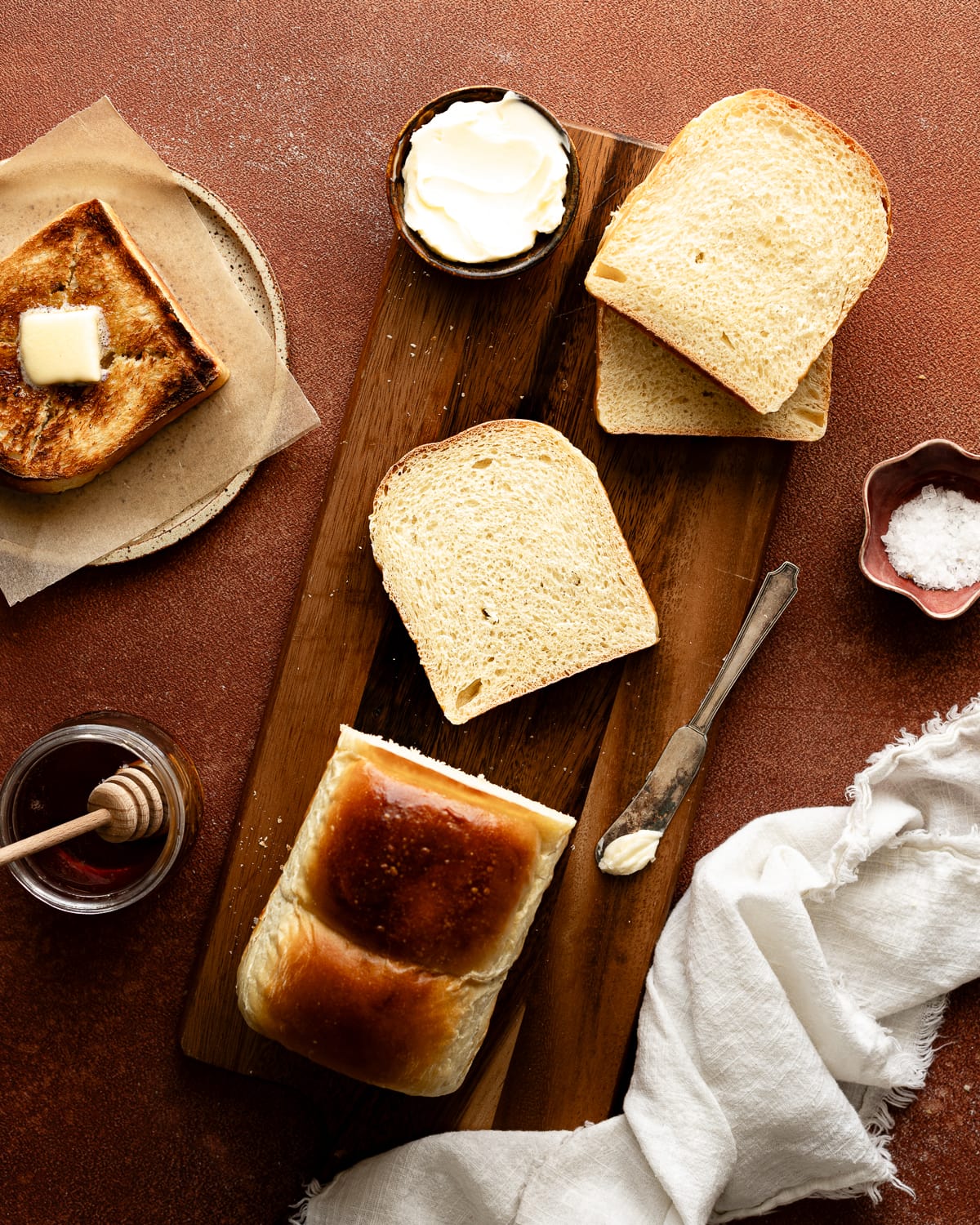
What's the benefit of using Tangzhong?
- Allows for higher hydration without making the dough overly sticky.
- Makes dough easier to handle despite the added moisture.
- Enhances the overall tenderness of the crumb.
- Improves moisture retention, keeping bread fresh longer.
What you need
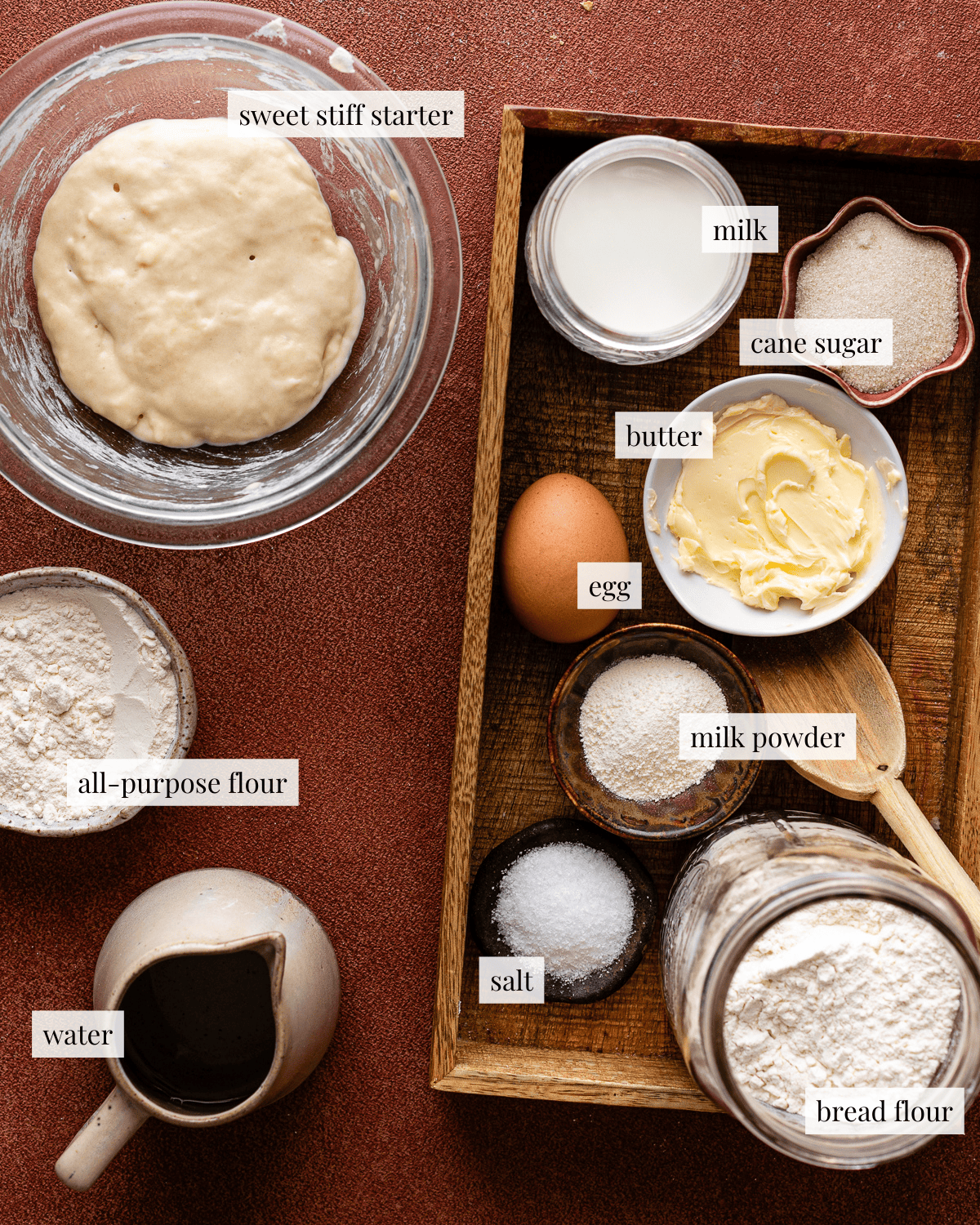
Active Sweet Stiff Starter: Make sure your starter is active before making this recipe! Your loaf will be too sour, heavy, and dense if you use a weak starter. I like to mix my sweet starter the night before and make the dough in the morning.
Bread Flour: The high protein content of bread flour provides structure and allows dough to hold its shape as it rises even with all of the enrichments in the dough, substitute all-purpose flour if that’s all you have. Do not use whole wheat or rye flour or your bread will turn out too dense.
Milk powder: Introduces more sugar and protein to bread improving structure, texture, and browning. It's optional but highly recommended.
Salt: Use sea salt or kosher salt for the best results. You may need to adjust your measurements if you use teaspoons, but the gram measures will be the same.
See the recipe card for detailed ingredient information.
Looking for more soft, fluffy bread recipes made with an active sourdoughstarter (with no commercial yeast)? Try my Sourdough Dinner Rolls, Sourdough Brioche Bread, Sourdough Hamburger Buns, Sourdough Babka, Sourdough Sticky Buns and Sourdough Monkey Bread.
Why use a stiff starter?
I like to use a sweet stiff starter when making enriched dough. A sweet stiff starter is a 50% hydration starter with sugar added. While this is a high-hydration loaf (about 70%), remember that we want to control the addition of water through the Tangzhong.
Using a low-hydration starter prevents more moisture from being added to the dough so that it does not become too wet and slack. This also enables me to add a higher proportion of sourdough starter to the dough, which helps the dough rise quicker.
Step-by-step Instructions
STEP 1 Prep: The night before, make your sweet stiff starter (image 1). The next day, make the Tangzhong (image 2).

STEP 2 Make the dough: Whisk the wet ingredients together (image 3). Make the dough and knead the butter in a tablespoon at a time (image 4). Knead the dough for 5 to 10 minutes (image 5). Your dough should feel supple and look completely smooth after kneading (image 6).
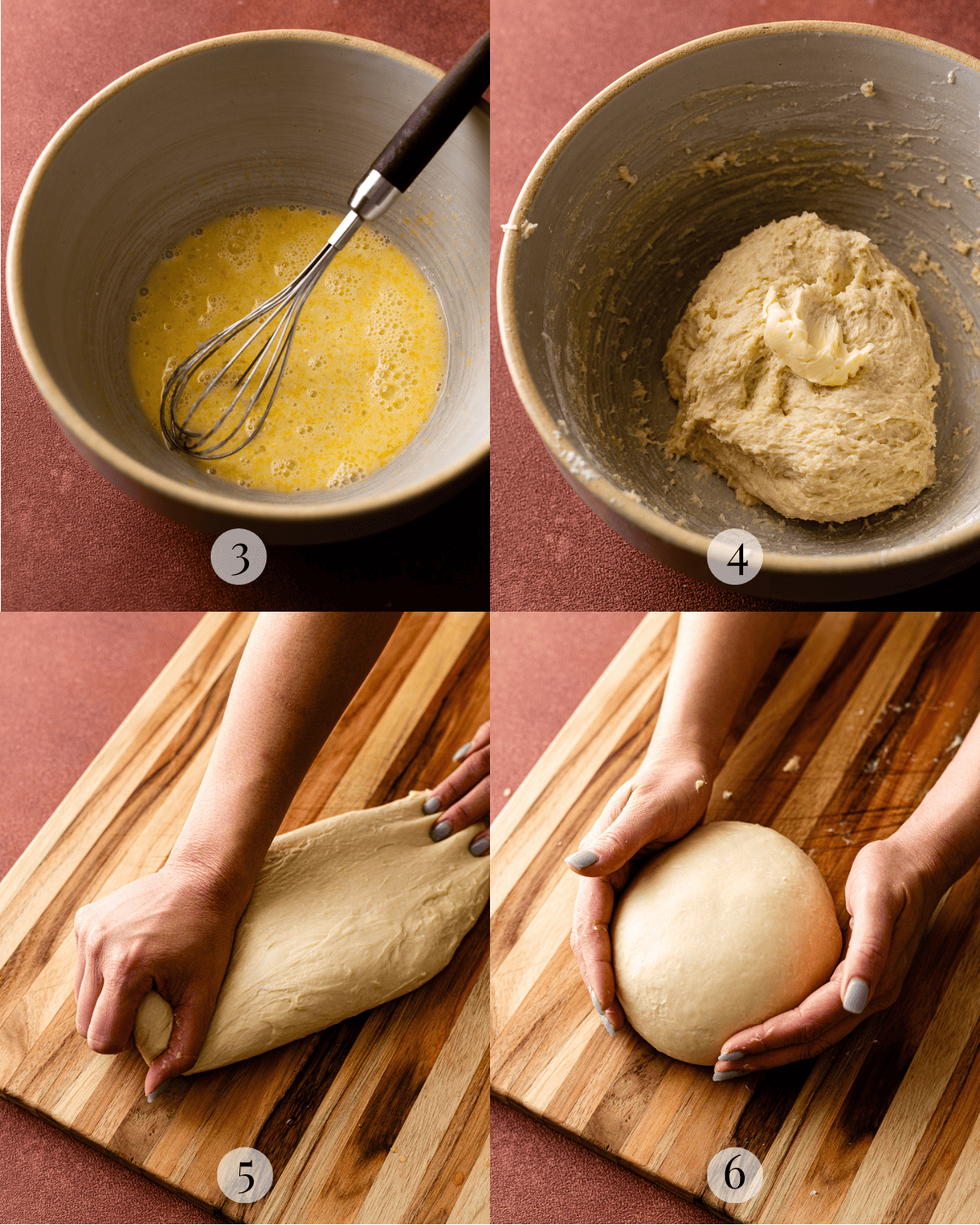
STEP 3 Proofing: Transfer the dough to a clean, lightly-oiled bowl and let it rise until doubled in volume (about 4 to 6 hours).
STEP 4 Cold proof: Once your dough has doubled, transfer it to the refrigerator to proof overnight.
STEP 5 Shape the dough: Divide the dough in 4 equal portions. Round each portion into a tight ball, cover and let the dough rest for 10 minutes. Flatten dough ball into a long oval, about 10 inches (image 7). Roll the dough into a tight cylinder (image 8).

What's the purpose of shaping the loaf like this?
You can shape your dough anyway you want. I prefer shaping in this way because it prevents my bread from cracking and splitting as it bakes.
STEP 6 Final proof: Place the dough side-by-side in a prepared loaf pan (image 9). Let the dough rise in pan until puffy, well-risen and almost fills your pan (about 2 to 4 hours). Brush the dough with egg wash (image 10).
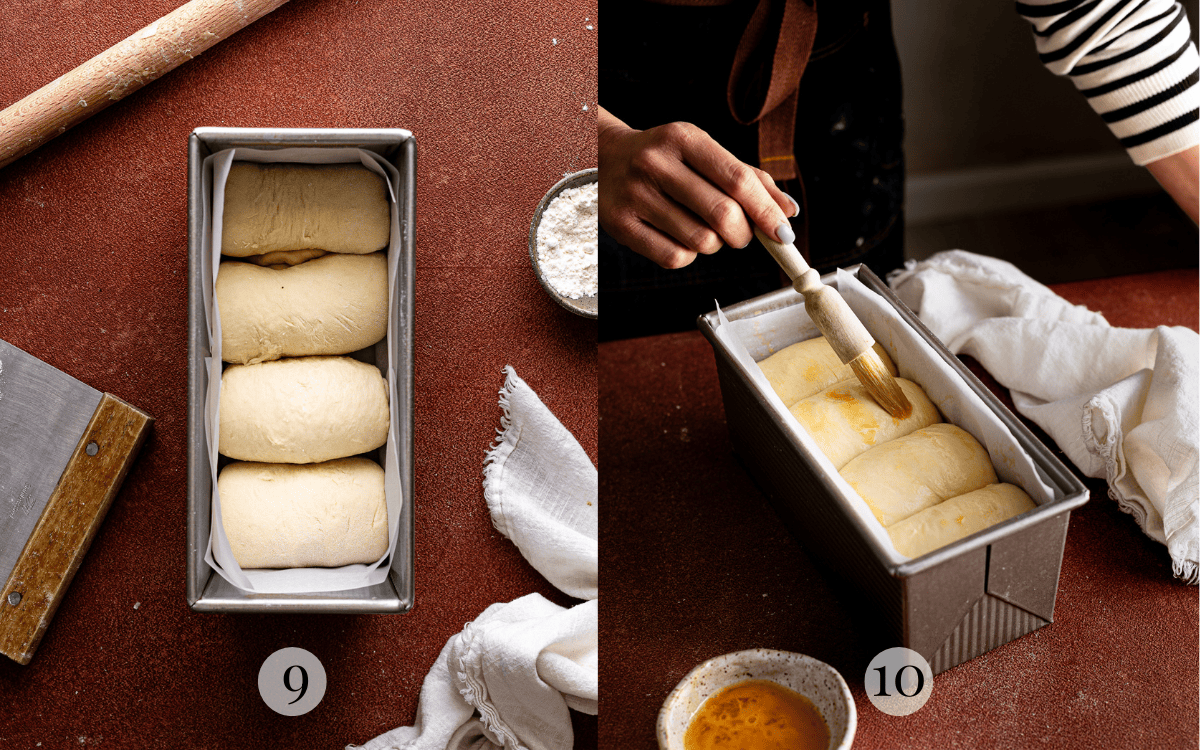
STEP 7 Bake: Bake at 350 F for 40 to 45 minutes.
Baker's Tips
- Do not use a weak starter, you’ll want a healthy starter that’s strong enough to efficiently ferment the dough and allow it to rise or your loaf will be gummy and dry.
- Use bread flour instead of all-purpose, with a higher protein level, bread flour improves the structure of bread resulting in taller, softer bread.
- Let the bread cool completely before slicing, while it may be tempting to tear into this bread right out of the oven, slicing it while it's still hot will cause all of the moisture to escape and cause your bread to dry out faster.
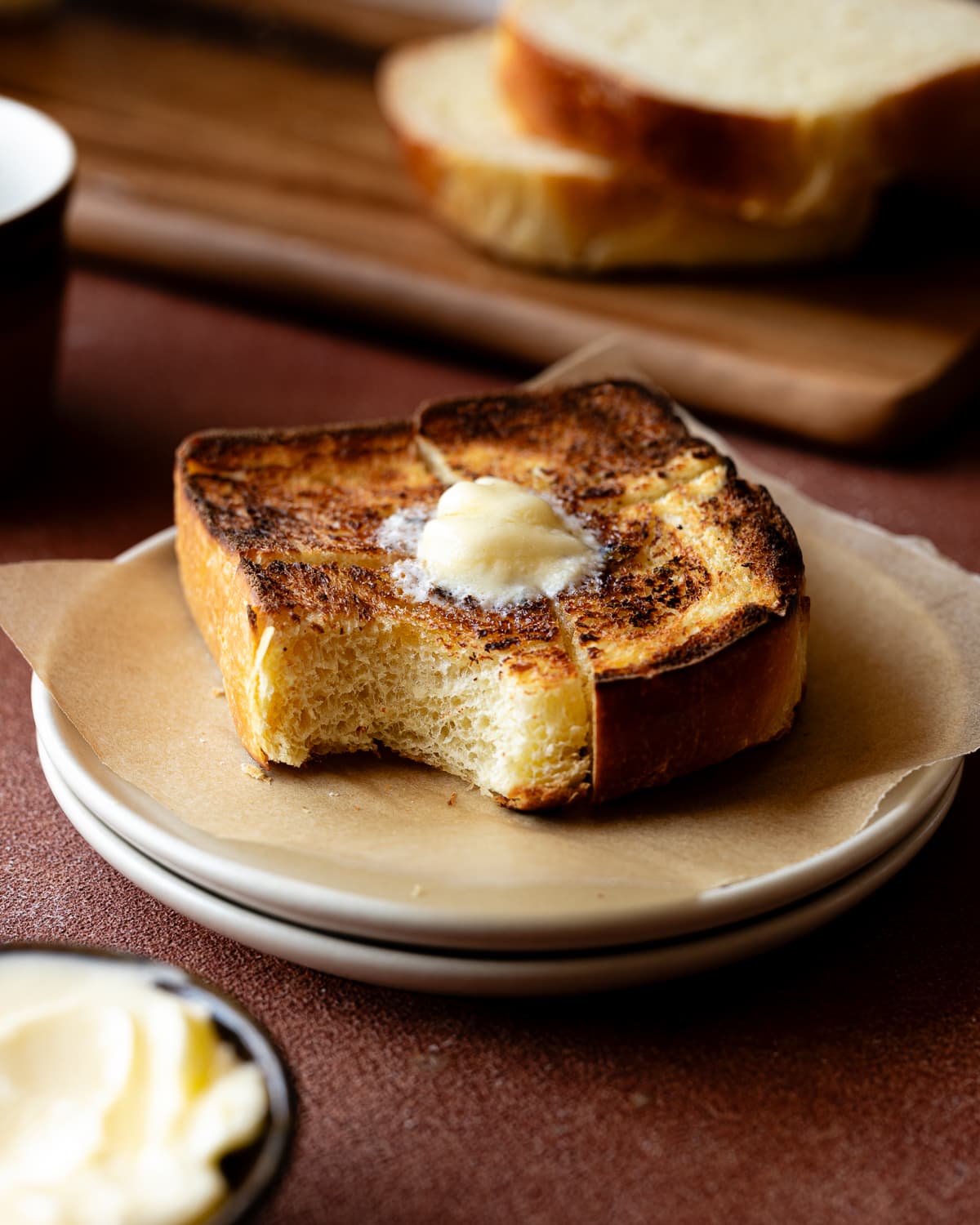
Recipe FAQs
Yes, but because of its lower protein content, your loaf may not rise as high. Bread flour has a protein content of 11 to 13%, which enables the dough to create stronger gluten bonds this allows your bread to maintain its structure and shape as it rises, and prevents it from collapsing in the oven.
There are a few reasons your bread did not turn out light and fluffy.
- Your starter is too weak
- You did not give your dough enough time to rise
- Your dough was not kneaded enough and the gluten structure was too weak
- Your dough has acidified and the gluten has broken down
I used a 9 by 4 inch Pullman pan, it has much higher and straighter sides than a typical loaf pan. Some Pullman pans come with lids, however, this recipe does not require one.
You can use a standard 8½ by 4½-inch loaf pan instead, but your loaf will not rise as high.
More sourdough bread recipes you may like
Did this recipe rise to the occasion?
★★★★★
Please leave a star rating and a comment. Your feedback helps me create more delicious sourdough recipes. I read and truly appreciate every message.
Don't forget to PIN this recipe on Pinterest to save it for later!
Thank you for your support!
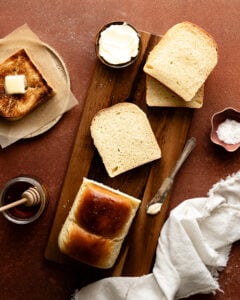
Sourdough Japanese Milk Bread Recipe
Equipment
- 9 by 4-inch Pullman pan or 8 by 5 inch loaf pan
This section may contain affiliate links
Ingredients
Sweet Stiff Levain
- 60 grams all-purpose flour
- 28 grams water
- 7 grams sourdough starter fed or unfed
- 10 grams organic cane sugar
Tangzhong
- 40 grams all-purpose flour
- 170 grams water
Dough
- 75 grams whole milk
- 1 egg large (50 grams in shell)
- 6 grams salt
- 30 grams organic cane sugar
- 7 grams milk powder optional
- 300 grams bread flour
- 28 grams unsalted butter softened
Egg Wash
- 1 egg
Click US Customary to view volume measurements
Instructions
Make the sweet stiff levain
- The night before, combine sweet stiff starter ingredients together. Stir until well combined, cover with a piece of plastic wrap and set in a warm place.60 grams all-purpose flour, 28 grams water, 7 grams sourdough starter, 10 grams organic cane sugar
Make the Tangzhong
- The next day, combine the all-purpose flour and water in a microwave-safe bowl. Whisk until no dry bits of flour remain.40 grams all-purpose flour, 170 grams water
- Microwave the mixture in 30-second increments, whisking after each interval.
- After two or three times, your mixture should appear thickened. Leave the cooked roux uncovered until completely cooled.
Make the dough
- Whisk the milk, egg, salt, cane sugar, and milk powder (if using) together in a large mixing bowl until completely incorporated.7 grams milk powder, 6 grams salt, 1 egg, 75 grams whole milk, 30 grams organic cane sugar
- Stir in the bread flour, the cooled Tangzhong and all of the sweet stiff starter. Mix until the dough comes together in a cohesive mass.300 grams bread flour
- Knead the butter into the dough one tablespoon at a time, waiting until each addition is absorbed before adding more. The dough will gradually feel less greasy and more supple as you knead.28 grams unsalted butter
- Cover the bowl with plastic wrap and let the dough rest for 1 hour.
Strengthen the dough
- Turn the dough out on a lightly-oiled work surface. Knead the dough until completely smooth about 5 to 10 minutes.
Bulk fermentation
- Place the dough in a clean, lightly-greased bowl and cover with plastic wrap. Let the dough rise until it has doubled in volume. The dough should look bubbly and feel like it is full of air. This could take between 4 to 6 hours. Give your dough enough time to rise, don’t shape it until it has risen noticeably.
Cold proof
- Cover the pan with plastic wrap and refrigerate overnight. This helps the dough develop flavors.
- Shape the dough
- Grease an 8 by 4-inch loaf tin with butter, or line it with parchment paper. Turn the dough out on a lightly floured surface. Divide the dough into 4 equal pieces using a bench scraper. Round each into a tight ball.
- Using a rolling pin, flatten the dough into a long oval, about 10 inches long. Working with the short side, roll the dough into a tight cylinder. Place each portion into the prepared pan. Cover the pan with plastic wrap and set it in a warm place.
Second rise
- Let the dough rise until puffy and fills the pan up to an ½-inch below the top.
Prep
- Preheat the oven to 350 F. Beat the egg until no traces of egg white remain.
Bake
- Brush the tops of the dough with egg wash. Bake for 40 to 45 minutes or until the loaf is golden brown.1 egg
Cool the loaf
- Let the loaf cool on a wire rack for at least two hours before slicing.
Store
- Store the unsliced loaf in an airtight container at room temperature for up to 5 days.
Tips
These recipes were developed and tested using grams for precise measurements. To increase your chances of success, I recommend investing in a kitchen scale. I've included rough volume estimates (in tablespoons and cups), but they might not be totally accurate.
Remember all ovens are unique, these recipes were tested in my oven which runs cooler than others. You might need to lower the temperature if your bake appears to be browning too quickly. Monitor your bake closely and make adjustments if needed.
Notes
Nutrition
I am not a nutritionist or dietitian, any nutrition information provided is an estimate.

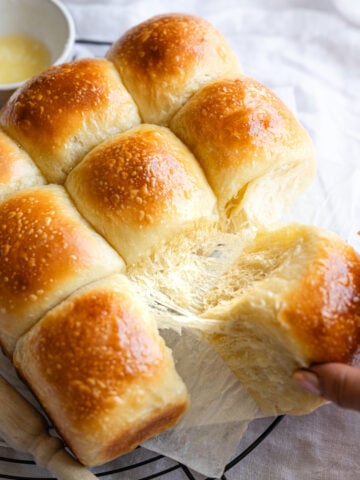
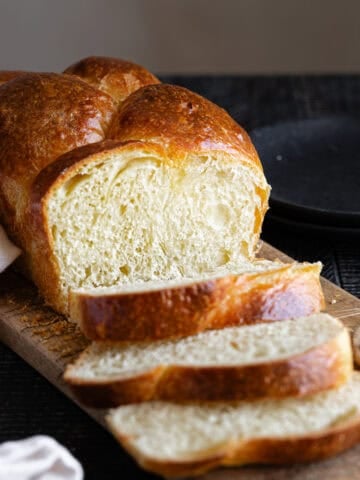
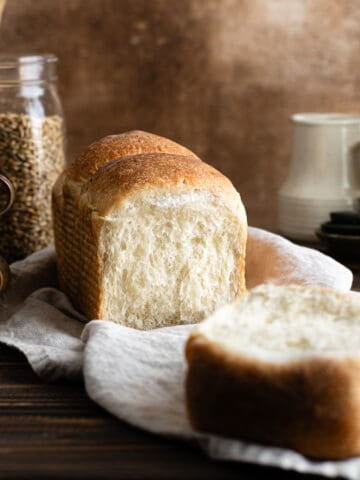
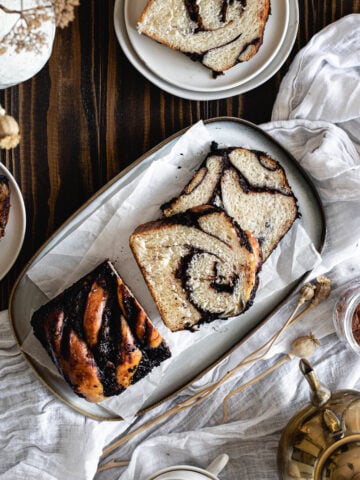
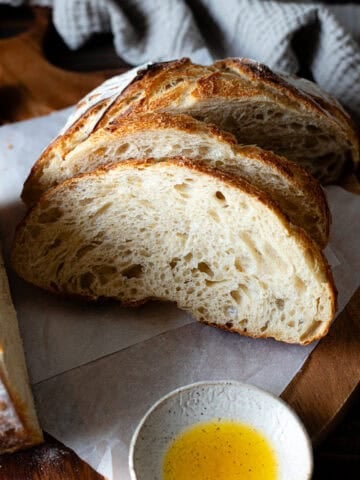
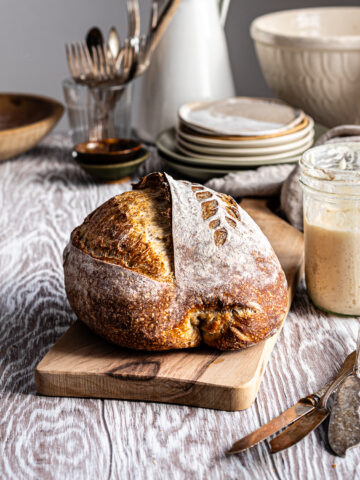
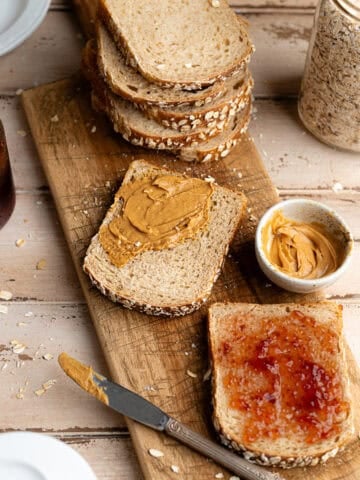
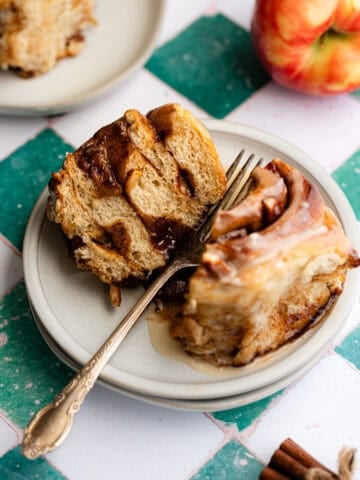
Priyanka R says
Hi again!
I made this two times, once as a loaf and once as burger buns! both awesome. How would I adjust the dough ingredients if I don't want to add the egg in the main dough?
Thanks!
Hannah Dela Cruz says
Glad you love the recipe so much and that it's worked in so many different ways for you! I would replace the egg with cooked mashed potatoes, pumpkin puree or apple sauce!
Priyanka R says
Hi!
This looks amazing and love the idea of sweet stiff starter! I want to convert these into burger buns - I would use the same recipe right and just reduce the cooking time?
Hannah Dela Cruz says
Absolutely! You could probably make 6 to 8 buns from this recipe. Bake for 15 to 20 minutes.
Priyanka R says
thank you so much for replying!!
Francis says
Delicious bread, perfect when toasted!
Skipped the cold ferment as my starter was particularly sour after a few weeks in my fridge. I was worried as my dough was pretty sticky when I started the bulk rise but it came out beautifully. Great crumb and so soft with amazing structure. Will make again!
Hannah Dela Cruz says
So happy you enjoyed the loaf and good call on skipping the cold ferment!
Sara says
My stuff starter looks like dough and not like yours in the picture. I followed the recipe and I’m not sure what I did wrong?
Hannah Dela Cruz says
Hi Sara,
The stiff starter is supposed to be quite thick and dough like. Every starter is different, but as long as it feels bubbly and looks like it has increased in volume it should work.
Hannah
Emily says
The flavor was amazing!
But I had to add nearly an extra cup of bread flour to make the dough into a kneadable consistency. I followed the gram measurements exactly, is there something I might have done wrong? (neither the sweet starter and the tangzhong was overly wet/soupy, but when everything was combined the dough was way too sticky to handle).
Hannah @ Make It Dough says
Glad the bread still turned out! I live in quite a dry climate so my doughs usually need to be a bit more hydrated.
KT says
Hello! This looks so yummy. Would it be possible to substitute the powdered milk with something? Perhaps more milk? Thank you so much!
Make It Dough says
You can skip the milk powder all together and the loaf will still turn out beautifully
Qiuru says
I've tried your recipe and my family is in love with this bread. Very very soft and fluffy and it stayed soft and moist for up to 4 days. Slightly sweet slightly tangy. This recipe is a keeper!
Make It Dough says
This recipe is a staple in our kitchen! So glad you loved it as well 😀
Dee says
i follow this method to make my 100% whole wheat loaf... but it doesnt have sour dough tho. i am planning to try sourdough and came across your blog. love your site. will try some recipes from here. Thank you.
Make It Dough says
I've never tried a whole wheat loaf using tangzhong! It sounds incredible. Can't wait to hear about your results.
Nana says
Hey, I want to try out your recipe, could you tell me which size of pan you used here?
Hannah Dela Cruz says
Hi Nana! I used a 9 by 4 inch pullman pan, the exact one is linked in the equipment section of the recipe card.
Sunup to Sundown says
Absolutely will let you know!
Sunup to Sundown says
This bread looks absolutely delicious! We will have to try this recipe.
Make It Dough says
Please do! I’d love to know how it turns out!